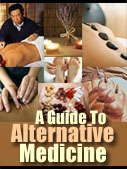Ayurvedic Medicine
Ayurvedic Medicine
The legend of the beginning of ayurvedic medicine is that the one creator,
Brahma, taught the theories and practices to one of the animal lords, who taught it to the
Asvins-the divine twins. They taught this to the chief of the shining ones, called Indra. These
were the deities of ancient verdict times.
As mankind fell victim and suffered from ailments and disease the wise men went
to Indra and were taught the ancient remedies and healing cures. This is the knowledge of medicine,
which is divided into 8 separate branches of the divine tree.
Kaya chikitsa is the medicine of the internal organs and workings of the
body;
Baala is the study of the medicine needed in order to heal
children;
Urdhvanga is the original study of the ears, nose and throat (as well as
dentistry.)
All surgery, including plastic surgery, is called Salya;
The study of toxicology-stemming originally from the poison extracted from
bug bites-is Danstra.
The study of what we now know as Alzheimer's and other diseases of the age
advanced is called Rasayana
The study of pregnancy and gyneocology is Prasuti;
The study of mental illness and demon possession is the treatment called
Graha.
The belief is that there are three elements in /of the body which cause disease.
These are called Vata, Pitta and Kapha. We will talk about each one in turn.
Vata: We are all made up of space and air, with some
light, water, and earth thrown in. Vata transmits perceptions to the mind and body and maintains
the body's natural balance. If this energy which is used to transmit so much of the outside world
to our inner selves becomes imbalanced, disease sets in.
Pitta: This is the energy responsible for vision,
digestion, heat, hunger and thirst, happiness and intelligence. When this element is out of
alignment, it results in depression, weight gain or loss, dehydration, apathy, and digestive
problems.
Kapha disease is the result of lack of conserving
and stabilizing the body, we commonly call them viruses or "bugs."
All disease is called Vyaadhi. It is the state of the being when we are full of
discomfort or pain, but while all are caused by an imbalance in one of the three elements, they are
treated according to the classification of the trauma:
Adhyatmika: physical and constitutional (physical injury,
hereditary, and pre-disposition)
Adhibhautika: contributed to environment (allergies,
etc.)
Aadhidaivika: contributed to gods or spirits (demons. mental
imbalances)
So how does Ayurvedic treatment differ from modern medicine? Practitioners of
ayurvedic medicine believe that although antibiotics have their uses (take into consideration post
surgery antibiotics to edge out infection or post transplant antibiotics which if not taken will
surely cause certain death) ayurvedic doctors would rather see the balance of the body resume as
quickly as possible. The drugs used in ayurveda are derived from vegetables and minerals, with
plant alkaloids as the active ingredients.
While western medicine relies on this basic principle, the derivatives are often
chemically rather than naturally based. Before you study up on this medicine further and decide to
grow your own medicinal herbs, be forewarned that where the plants grow have everything to do with
their potency and ability to fight infection. You absolutely must have the right balance of
alkaline and acid in your soil, as well as stringent water and light conditions.
Some of the remedies might surprise you, as they are virtually the same as
Grandma used. The Ayurvedic remedy for a hacking cough? Equal parts honey and the juice from a
baked lemon. Grandma probably didn't know to bake the lemon to increase the acidity, but you get
the point.
|























